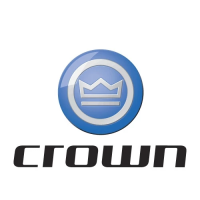187
M4.3-1055-055
04 Rev. 10/09
ELECTRICAL
ACCESS 123...System
5. If you raised the forks to obtain approximately 12
inches of lift height the last two messages will not
appear.
Raise allows the sensor to be more accurate than
when lower is the last function used because raise is
always used to pick up a load. So if you calibrate right
after raising, then you will calibrate out the seal friction
from raise.
The message will then change to:
Waiting to stabilize
For a few moments calibration procedures are stopped
so the load can stop any slight movement and the hy-
draulic pressure can stabilize. This permits an accurate
reading. The message will then change to:
Paused, raise above staging
6. Raise the mast above staging. The following mes-
sage will be displayed:
Stop raise command
7. Stop raising. The following message will be dis-
played:
Waiting to stabilize
For a few moments calibration procedures are
stopped so the load can stop any slight movement
and the hydraulic pressure can stabilize. This per-
mits an accurate reading. The message will then
change to:
Calibration Accepted
The display will ask:
Save? N
8. Press up/down arrow to toggle to "Y" then press
the enter arrow to save calibration.
C3.2 Steer Pot; this calibration allows the truck to learn
the parameters of the steering potentiometer (POT4).
1. Press the right arrow. The display will ask:
Sure? N
2. Press the up/down arrow to toggle to "Y" then
press enter arrow to continue. The display mes-
sage will change to:
Tire CW max, then Enter
CW and CCW are from the steer tire perspective not
from the steer tiller (trucks can be equipped with for-
ward or reverse steering).Turning the wrong way will
cause an event to occur and calibration failure.
3. Turn the steer tiller so the steer tire rotates clock-
wise until it reaches the mechanical stops. Then
press the enter arrow. The display message will
change to:
Tire CCW max, then Enter
4. Turn the steer tiller so the steer tire rotates coun-
terclockwise until it reaches the mechanical stops.
Then press the enter arrow. The display message
will change to:
Tire center, then Enter
5. Turn the steer tiller so the steer tire is in the straight
ahead position. Then press the enter arrow. The
display message will change to:
Calibration Accepted
The display will ask:
Save? N
6. Press the up/down arrow to toggle to "Y" then
press the enter arrow to save calibration.
C3.3 Brake Pedal; this calibration allows the truck to
learn the parameters of the brake pedal sensor
(RPS1).
1. Press the right arrow. The display will ask:
Sure? N
2. Press the up/down arrow to toggle to "Y" then
press enter arrow to continue. The display mes-
sage will change to:
Press pedal, then Enter
3. Depress the brake pedal until it reaches the me-
chanical stops.
4. Press the right arrow and monitor RPS1 voltage
with the pedal fully depressed.
5. Add 0.25 to 0.30 volts to the fully depressed pedal
voltage. For example, if the voltage displayed is
1.32 V add 0.25 and 0.30 V to 1.32 V for a total of
1.57 to 1.62 V.
6. Allow the pedal to rise so the voltage displayed
equals the amount calculated in step 5.
Raising the brake pedal for an additional 0.25 to 0.30
volts during this calibration prevents undesired brake
commands when traveling over bumps such as rough
floors or dock plates.
7. Press the enter arrow. The display message will
change to:
Release pedal, then Enter
Crown 2007 PF15628-55 Rev. 10/09

